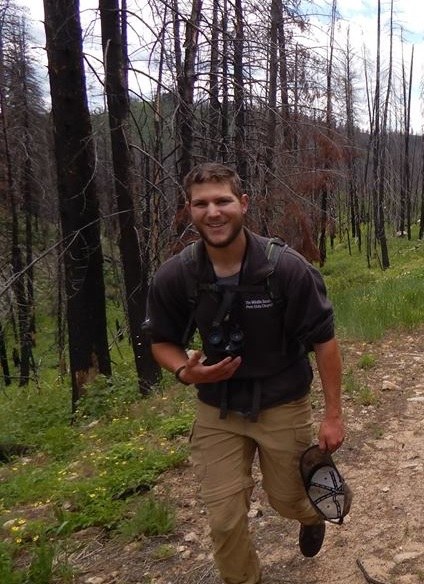Matt Slifko is a biological science technician (wildlife) with the United States Forest Service. His responsibilities include working under the wildlife biologist to acquire scientific data to ensure that proper management strategies are pursued in the Boise National Forest. He also spends a great deal of time fighting wildfires.

Matt Slifko
Degree Earned
B.S. Wildlife and Fisheries Science, 2014
Q: What was your educational path to Penn State and to degree completion?
I spent the duration of my first two years at Penn State Beaver and completed my degree at University Park.
Q: What additional training or education have you completed since earning your baccalaureate degree?
During summer employment with the Forest Service, I received a "red card," - that is, I became a Type II Wildland Firefighter. The training entailed a week of course work and practical firefighting scenarios. After graduating from Penn State, I enrolled in a fire ecology course at the University of Idaho, where I plan to pursue my M.S. in Wildland Fire Ecology and Management beginning fall 2016.
Q: What were some of your activities as a student?
As a student, I dedicated much of my time to volunteering for bird banding or tree plantings on the weekends. It was a way to give back to science and the environment. I also became involved with the student chapter of The Wildlife Society, which provided endless opportunities to become involved and connect with individuals in the wildlife career on a national level.
Q: How did you get interested in the major you selected?
Since I was a child, I was always outside inspecting the wildlife creatures I could discover on my one-acre plot of land in western Pennsylvania where I grew up. My childhood experiences were the roots to the path of obtaining a degree in Wildlife and Fisheries Science.
Q: What's your average day on the job?
An average day on the job typically yields a fair amount of hiking. The most rewarding part of my job is seeing the areas that most people will never get to see. I currently am working on a new protocol that the USFS is using to survey for sage grouse (Centrocercus urophasianus) habitat called Sage Grouse Habitat Assessment Framework.
Q: How did you get to where you are today?
I got to where I am today by never passing on an opportunity and making the best of what was given to me. I also made it a priority to always have "a foot in the door," that is, inquiring with previous employers/professors to receive any opportunities they could offer.
Q: Was there an activity or course at Penn State that was particularly important to you?
Bird banding was very special. There was nothing more rewarding than gaining practical field experience in my free time.
Q: What advice do you give someone who wants to do what you do?
You must have a passion for what you want to do with your life. For me, it was wildlife management; that is what fueled my desire to learn everything about wildlife populations.
Q: What do you like most about your job?
The best part of my job is connecting with people who have similar interests and comparing career paths.
Q: Does Penn State play any role in the work you're doing now?
Without a doubt, Penn State plays the most significant role in the work I am doing now. My education gave me a professional, firm background in the field of wildlife and fisheries science.
Q: What advice do you have for current students?
Never be afraid to diversify your background or resume. Becoming strictly exposed to only wildlife- specific courses can have an adverse effect your employment opportunities. Forestry courses and GIS courses are fine examples of ways to make a person a more well-rounded wildlife professional.

